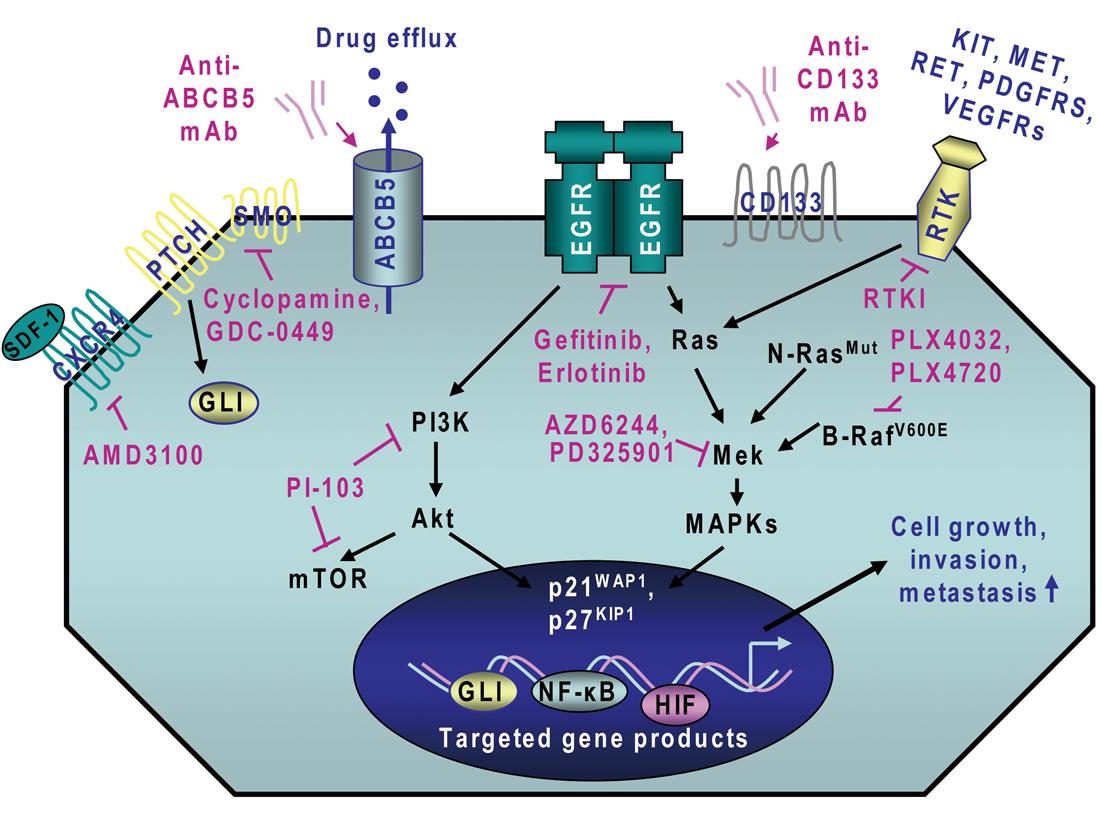Copyright
©2012 Baishideng Publishing Group Co.
World J Clin Oncol. Mar 10, 2012; 3(3): 32-42
Published online Mar 10, 2012. doi: 10.5306/wjco.v3.i3.32
Published online Mar 10, 2012. doi: 10.5306/wjco.v3.i3.32
Figure 1 Novel multitargeted strategies against locally advanced, aggressive and metastatic melanomas.
The scheme shows the intracellular signaling cascades induced through the activation of distinct growth factor pathways which may provide critical roles for the sustained growth, survival, migration, invasion, metastases and/or drug resistance of melanoma cells, including melanoma-initiating cells, through the up-regulation of the expression levels of different oncogenic gene products. The oncogenic gene products include c-Myc, Bcl-2, N-cadherin, snail, twist, matrix metalloproteinases (MMPs), urokinase-type plasminogen activator (uPA), cyclooxygenase-2 (COX-2) and vascular endothelial growth factor (VEGF). The potential therapeutic agents that may be used to block these tumorigenic signaling pathways, including a selective inhibitor of receptor tyrosine kinases (RTKI), EGFR (gefitinib or erlotinib), smoothened (SMO) hedgehog signaling element (cyclopamine or GDC0049) PI3K/mTOR (PI-103), oncogenic B-RafE600V mutant (PLX4032 or PLX4720) and MEK (AZD6244) as well as a monoclonal antibody (mAb) directed against stem cell-like markers, CD133 and ABCB5 multidrug transporter are also indicated. NF-κB: Nuclear factor-kappaB; HIF: Hypoxia-inducible factors; EGFR: Epidermal growth factor receptor.
- Citation: Mimeault M, Batra SK. Novel biomarkers and therapeutic targets for optimizing the therapeutic management of melanomas. World J Clin Oncol 2012; 3(3): 32-42
- URL: https://www.wjgnet.com/2218-4333/full/v3/i3/32.htm
- DOI: https://dx.doi.org/10.5306/wjco.v3.i3.32









